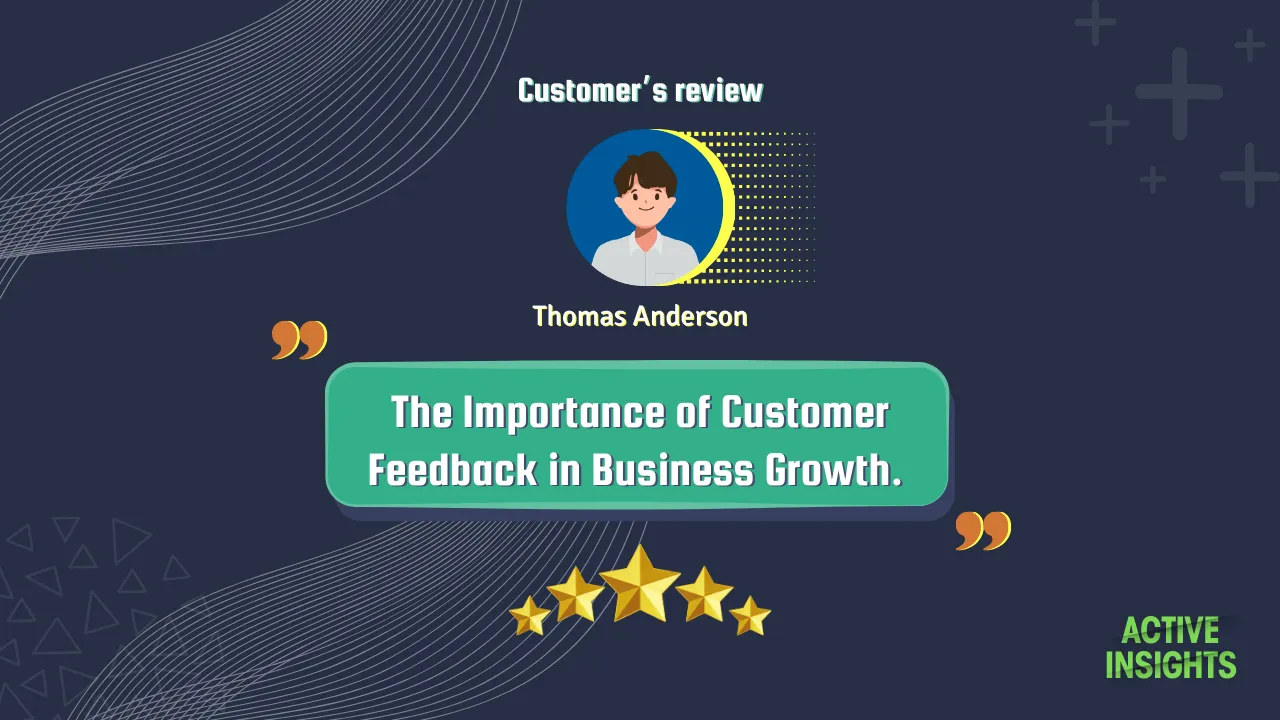Increasing sales is a critical goal for any small business owner aiming to grow their customer base and drive success. In fact, studies show that businesses focusing on improving customer satisfaction see an average 20% increase in sales growth (Source: Small Business Trends).
Whether you're looking to attract new customers or increase sales from existing customers, implementing the right strategies is key.
In this article, we’ll dive into 7 actionable tips on how to increase sales for small businesses.
These tips will help you enhance customer loyalty, improve service quality, and build effective marketing strategies for your business’s growth.
How to Get Started with Increasing Sales for Small Businesses

1. Set Clear Sales Goals
Setting clear sales goals is essential for guiding your business’s growth and ensuring measurable success.
These goals should include targets for new customers, repeat customers, and more sales through both social media platforms and email marketing strategies to keep progress on track.
2. Identify Key Sales Channels
Identify the right sales channels where your target audience is most active, such as social media pages, social media profiles, or even social media posts.
These channels will help you reach potential customers effectively and promote special deals and loyalty programs to drive sales growth.
3. Understand Your Competitive Advantage
Knowing your competitive advantage helps differentiate your business from other businesses in the market.
This insight can drive your marketing strategies and allow you to offer unique marketing materials or free trials that enhance customer satisfaction and loyalty.
4. Create a Customer-Centric Sales Strategy
Creating a customer-centric sales strategy ensures that your efforts are aligned with customer needs and pain points.
By focusing on customer experience and providing excellent customer service, you’ll build customer loyalty that translates into repeat customers and positive reviews.
5. Track and Measure Your Sales Progress
Tracking and measuring your sales progress helps you understand what’s working and what needs improvement.
Regular analysis of your sales growth, advertising messages, and social media posts can help identify trends and refine strategies, boosting more traffic to your business profile and increasing sales over time.
By following these steps, you'll establish a strong foundation for increasing sales in your small business while nurturing long-term customer relationships.
7 Simple Tips on How to Increase Sales

1. Understand Your Target Audience
Define Your Ideal Customer: To increase sales, begin by defining your ideal customer. Understand who they are, what they need, and how your product or service can meet their needs.
Conduct Market Research: Conduct market research to gain insights into customer preferences, industry trends, and competitor offerings. This helps ensure you are targeting the right audience effectively.
Segment Your Audience for Tailored Strategies: Segment your audience into distinct groups based on factors such as demographics, behavior, and needs. This allows you to create tailored strategies that resonate with each group.
Use Analytics to Understand Customer Behavior: Leverage analytics to track customer behavior and preferences. This data will guide your marketing efforts, allowing you to adjust strategies to align with what drives engagement and conversions.
2. Leverage Online Marketing
Build a Strong Social Media Presence: Create engaging content on social media profiles and run targeted social media ads to reach potential customers effectively. Consistently post relevant content that resonates with your target audience and encourages interaction, building a community around your brand.
Utilize Email Marketing to Engage Customers: Use email marketing to stay connected with your customers and promote new offers, encouraging repeat purchases. Personalize your emails to make customers feel valued and include compelling calls to action that motivate them to act.
Run Targeted Ads for Better Reach: Focus on social media advertising to target the right audience and drive more traffic to your site. Tailor your ads based on demographic data, interests, and behaviors to ensure they reach potential customers who are most likely to convert.
Optimize Your Website for Conversions: Make sure your website is optimized for conversions using search engine optimization (SEO) techniques that enhance visibility and user experience. Streamline your website design, ensure quick load times, and include clear calls-to-action to guide visitors toward making a purchase.
3. Offer Promotions and Discounts
Attract customers with irresistible offers.
Create Time-Limited Offers to Drive Urgency: Use special promotions with limited-time discounts to encourage quick purchases. Highlight the limited availability in your marketing materials to increase FOMO (fear of missing out), prompting customers to act fast.
Use Bundle Deals to Increase Value: Create attractive bundle deals that offer good value to customers, increasing the perceived worth of your products. By offering complementary products together at a discounted rate, customers feel like they’re getting more for their money, which can boost sales.
Introduce Loyalty Discounts for Repeat Customers: Offer loyalty programs and discounts to reward repeat customers, encouraging their continued business. Provide exclusive discounts or rewards for loyal customers, making them feel appreciated and more likely to return.
Promote Special Sales During Holidays or Events: Run special sales or special deals during holidays or events to attract more customers and increase traffic. Promote these sales well in advance on your website and social media platforms to create buzz and anticipation.
4. Focus on Upselling and Cross-Selling
Increase the average transaction value by strategically recommending complementary products.
Identify Complementary Products for Cross-Selling: Understand which products pair well together and suggest them to customers as upsell or cross-sell options. By showcasing related items, you create opportunities for customers to enhance their purchase while improving their overall shopping experience.
Train Your Team to Upsell Effectively: Empower your sales team with sales training to improve their ability to upsell and encourage customers to purchase additional items. Providing your team with the right techniques and confidence will help them communicate the value of these additional products naturally.
Use Personalization to Recommend Products: Use data-driven insights to offer personalized product recommendations based on customer behavior and preferences. By analyzing past purchases and browsing patterns, you can tailor suggestions that feel more relevant to the customer, increasing the likelihood of additional sales.
Offer Discounts on Upsell Items to Boost Sales: Offer discounts on upsell items to make them more attractive to customers and encourage higher spend. Creating bundle offers with discounts can make upselling more enticing, helping customers feel like they’re getting a better deal while increasing your revenue.
5. Improve Your Product or Service Quality
Ensure that the products or services you offer meet or exceed customer expectations.
Gather Feedback to Identify Quality Gaps: Use customer feedback to identify areas for improvement in your offerings and fill any quality gaps. By listening to your customers, you can make targeted improvements that address their needs, ensuring that your products or services always meet their expectations.
Invest in Product Upgrades or New Features: Regularly update your product line to include the latest features or improvements that attract more customers. Staying on top of industry trends and introducing new features can differentiate your offerings from competitors and keep your products appealing to both new and returning customers.
Maintain Consistency in Quality Delivery: Always deliver high-quality products or services, ensuring that your customers are satisfied and more likely to return. Consistency is key in building trust and encouraging repeat business, which ultimately leads to increased sales and customer loyalty.
Ensure Excellent Packaging and Presentation: Pay attention to service quality and packaging as it can significantly influence your customers’ perceptions of your brand. Well-packaged products not only protect your items but also make a positive impact on customer satisfaction, leading to better reviews and repeat business.
6. Optimize Your Pricing Strategy
Pricing can directly influence purchasing decisions.
Conduct Competitive Pricing Research: Use market research to compare your prices with competitors and adjust your strategy accordingly to stay competitive. By regularly checking competitors' pricing, you can find ways to remain attractive to customers while maximizing your profits.
Test Different Pricing Models for Best Results: Experiment with various pricing models to find the most effective strategy for attracting customers and increasing sales. Whether it’s tiered pricing, subscription-based models, or volume discounts, testing different approaches helps identify the most appealing option for your target market.
Consider Psychological Pricing to Influence Purchases: Implement psychological pricing techniques, such as pricing just below whole numbers, to make products seem like a better deal. For example, pricing an item at $9.99 instead of $10 can create a perception of a better bargain, encouraging customers to make a purchase.
Offer Flexible Payment Plans to Attract More Buyers: Introduce payment plans that cater to different customer budgets, making it easier for them to purchase higher-value items. Flexible payment options, like monthly installments, help reduce price barriers and increase the likelihood of closing sales.
7. Invest in Employee Training
Your team plays a crucial role in increasing sales.
Train Employees on Customer Service Excellence: Provide training that enhances your team’s ability to offer excellent customer service, ensuring a positive experience for your customers. Well-trained employees can build better relationships with customers, driving loyalty and repeat business.
Provide Sales Training for Better Conversions: Equip your team with sales training focused on improving conversion rates and driving sales. Training on upselling, cross-selling, and customer persuasion techniques can significantly impact overall sales performance.
Incorporate Regular Performance Feedback: Regular feedback sessions can help employees improve their sales techniques and customer interactions. Constructive feedback allows employees to refine their skills, ultimately enhancing their ability to close deals.
Empower Employees to Make Decisions on the Spot: Allow your employees to make quick decisions that can enhance the customer experience and resolve issues on the spot. Empowering your team to act swiftly can lead to quicker resolutions, greater customer satisfaction, and higher sales.
These tips will help guide small business owners on effective strategies to increase sales.
How to Retain Existing Customers and Increase Sales

1. Build Strong Customer Relationships
- To increase sales, focus on building strong customer relationships by engaging with them through various channels.
- By nurturing these relationships, you’ll create a loyal customer base that feels valued, increasing repeat purchases and fostering long-term loyalty.
2. Focus on Customer Loyalty Programs
- Implementing customer loyalty programs is a powerful strategy to retain existing customers and boost sales.
- Offering loyalty programs that reward customers for their continued business not only increases customer satisfaction but also encourages repeat customers, leading to steady sales growth.
3. Offer Personalized Experiences
- Personalized experiences go a long way in increasing sales and retaining existing customers.
- Tailoring your offerings based on their preferences, purchase history, and interactions will create a more customer-centric experience, increasing the chances of customer loyalty.
4. Provide Excellent Customer Support
- Providing excellent customer support is essential to retaining customers and increasing sales.
- Ensuring that your team is available to answer questions, resolve issues promptly, and provide the best service quality helps in building trust and improving customer satisfaction.
5. Encourage Repeat Purchases with Rewards
- Encouraging repeat purchases with rewards can significantly increase your sales.
- Consider creating special deals, discounts, or loyalty programs that incentivize customers to return and make additional purchases, ultimately leading to higher sales volumes.
6. Act on Customer Feedback
- Acting on customer feedback is essential for improving service quality and retaining customers.
- By listening to feedback, whether through surveys or direct customer interactions, you can make necessary changes that enhance the customer experience and foster a positive reputation for your business.
Why Customer Feedback Is Key for Small Business Growth

1. Gain Insights into Customer Preferences
Customer feedback is a powerful tool for understanding what your customers really want.
It provides valuable information on their product line preferences and helps you tailor your offerings.
Regularly asking for feedback lets you keep your business profile updated and relevant, ensuring you meet the evolving needs of your target audience.
2. Spot Trends and Emerging Needs
Feedback helps you stay ahead by identifying new prospects and emerging needs.
By paying close attention to customer comments and reviews, you can spot trends before they become mainstream.
This allows you to adjust your business strategy and even your advertising messages to appeal to these shifting preferences, giving you a competitive edge over other businesses.
3. Improve Product or Service Quality
Acting on feedback is one of the best ways to improve your service quality and product offerings.
Whether it’s enhancing a feature or making improvements based on customer experience feedback, small adjustments can lead to better customer satisfaction and loyalty.
Happy customers are more likely to share positive reviews, which can attract new customers.
4. Measure Customer Satisfaction Effectively
Feedback is essential for tracking customer satisfaction. By gathering opinions and assessing how well your product or service is meeting customer needs, you can make informed decisions on where to improve.
This helps you offer excellent customer service and ensures that your customers feel heard, which in turn supports sales growth and customer retention.
5. Increase Customer Retention with Feedback
Incorporating feedback into your business practices is key to retaining existing customers.
Customers who feel their opinions matter are more likely to continue doing business with you, leading to higher customer loyalty.
Moreover, addressing issues quickly increases your chances of turning paying customers into repeat customers.
6. Refine Business Strategies Based on Feedback
Customer feedback can also guide the refinement of your marketing strategies.
By reviewing what customers appreciate or dislike about your products, you can tweak your approach to attract more potential clients.
Additionally, this feedback can help you craft more effective social media posts and advertising messages, strengthening your overall marketing efforts.
How to Adapt Your Sales Strategies to Changing Market Trends

1. Monitor Industry Trends Regularly
To stay ahead in business, it’s crucial to keep an eye on industry trends.
How to do it:
- This includes tracking updates on social media platforms where industry leaders and competitors share valuable insights.
- Regularly reviewing these platforms will help you stay informed about market shifts and consumer behaviors, allowing you to adapt your sales strategy accordingly.
2. Stay Agile and Be Ready to Pivot
The ability to adjust quickly is vital for staying competitive. Whether you run a social media account for your own business or a larger organization, agility in decision-making can make all the difference.
How to do it:
- When market conditions change, you need to be ready to pivot.
- This could mean adjusting your product offerings or shifting focus to different target demographics based on real-time feedback.
3. Embrace New Technologies and Tools
As technologies evolve, embracing new tools that enhance your sales strategies is essential.
How to do it:
- Incorporating automation tools, CRM systems, or advanced analytics platforms can help you streamline processes and keep your business adaptable.
- By leveraging these technologies, you can better understand customer behavior, which will improve your ability to respond to changing market needs.
4. Adjust Marketing Campaigns to Market Shifts
Market shifts often require quick changes in how you market your products or services.
How to do it:
- This could mean adjusting your messaging on social media platforms or updating your social media account strategy.
- Analyzing what works on these platforms, what resonates with your audience, and shifting content or offers accordingly can increase engagement and conversion during uncertain times.
5. Keep an Eye on Competitor Strategies
Understanding the strategies of your competitors is a key part of adapting to market changes.
How to do it:
- If you notice that competitors are targeting a different customer base or adapting their pricing model, it’s essential to evaluate whether you should adjust your own approach.
- Monitoring competitor marketing strategies on social media platforms can provide insights on how to better position your own business.
6. Leverage Data to Predict Future Trends
Data is a powerful resource when adapting to market changes.
How to do it:
- By regularly analyzing data from your social media account, website analytics, and sales trends, you can gain valuable insights.
- Using this information to predict future market trends will help you stay proactive instead of reactive, allowing you to adapt before changes fully occur.
7. Foster Innovation to Stay Ahead of Market Changes
Innovation is key to staying ahead of evolving market trends.
How to do it:
- Whether it’s experimenting with new products, updating customer service strategies, or enhancing your social media platforms with creative campaigns, fostering a culture of innovation within your own business will help you remain relevant.
- Being innovative will not only keep customers engaged but also allow you to offer unique solutions that competitors may not provide.
Conclusion
Increasing sales for small businesses requires a combination of strategic actions, including leveraging the right social media platform to engage with your audience and build brand awareness.
By focusing on customer satisfaction, offering valuable incentives, and continuously refining your strategies, small business owners can create lasting growth.
Remember, the key to success is to provide excellent customer service, which will help build trust and loyalty.
Consistently applying these tips will not only boost sales but also position your business for long-term success in a competitive market.

.webp)





.jpg)

